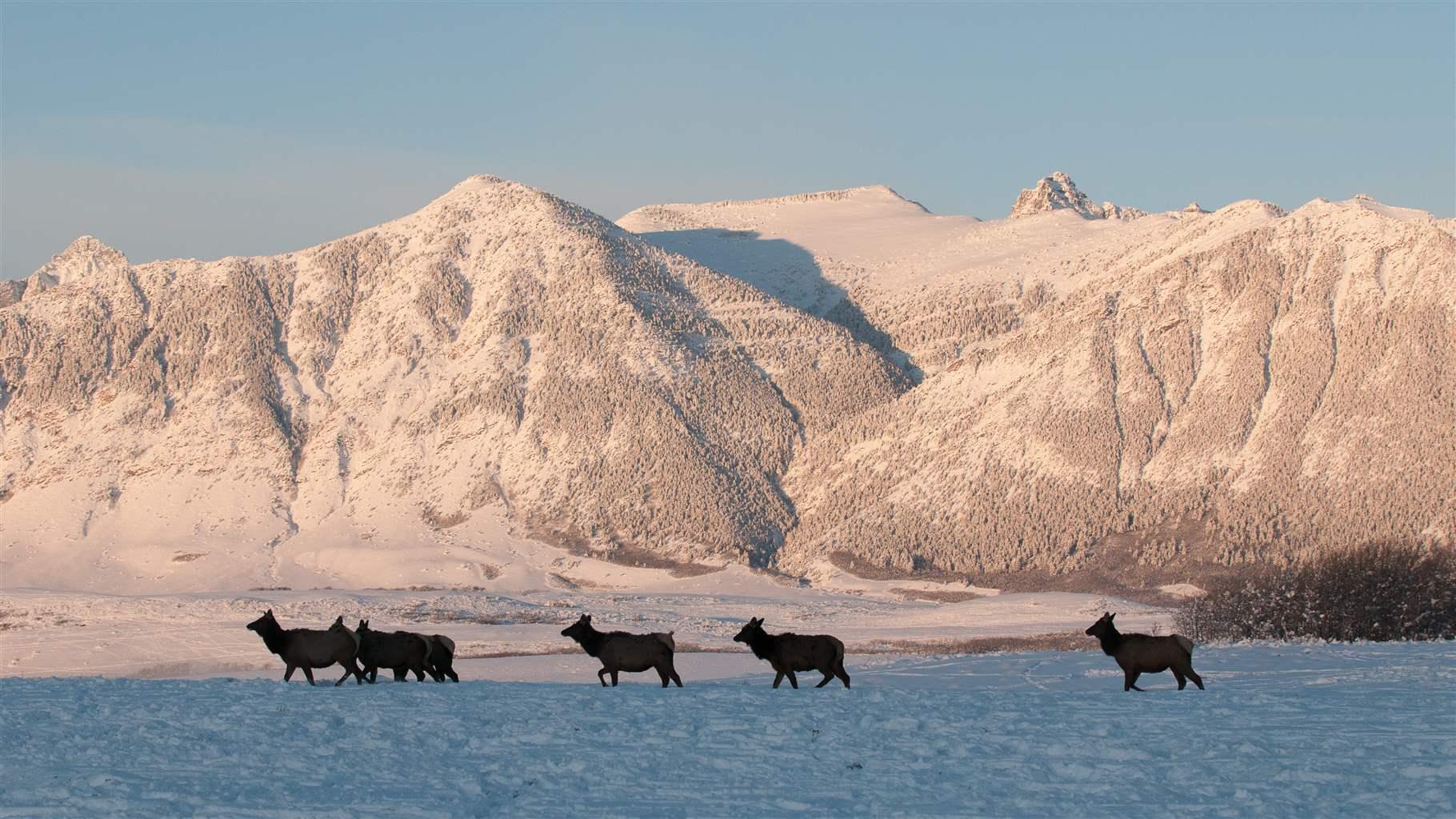Montanans Back Protection of Big Game Migration Routes New Poll Shows
Large majorities favor highway crossings, private land conservation, and restricted development

A recent poll of 500 registered voters in Montana shows widespread backing for the conservation of wildlife, including protection of migration corridors for big game species.
Montana is known for its wide-open landscapes and abundant wildlife—characteristics that are helping drive an influx of new residents to the state. As this growth continues, the government will face increasing challenges in maintaining wildlife habitat and in reducing human-wildlife conflict. Housing developments and denser traffic patterns are two factors that threaten the habitat and migration corridors of elk, mule deer, and pronghorn. Pew has been working with partners, including state officials and conservation organizations, in Montana to identify collaboration opportunities with landowners, sportsmen, scientists, and other stakeholders to conserve important habitat and migration routes.
The Pew-commissioned survey, conducted in early November by the research firms New Bridge Strategy and FM3, found that 88% of respondents view wildlife as important to their quality of life in the state and that 83% believe that wildlife are important for the state’s economy.
The survey also found that:
- 88% of respondents favor adoption of strategies and actions that conserve wildlife migration routes.
- 88% of respondents support construction of wildlife crossing structures—such as over- or underpasses—to help animals cross major highways where they intersect with known migration routes
- 87% endorse providing incentives to private landowners, such as ranchers, who voluntarily agree to conserve migration routes on their land as wildlife habitat.
- 75% approve a requirement that construction of new housing developments and associated roads and infrastructure avoid wildlife migration routes.
This widespread support comes from urban and rural areas of the state, and cuts across political parties with strong majorities of Republicans, Democrats, landowners, and city dwellers supporting actions such as building wildlife crossings on highways and conserving migration routes on public lands.
Eighty-six percent of respondents also agree with improving coordination between federal land management agencies and local stakeholders to prioritize conservation of wildlife migration routes on state and federal public lands.
Fortunately, Montana has a history of success in such collaboration and coordination, such as through the Montana Fish, Wildlife, and Parks’ Public Access Land Agreement Program, which seeks to open or improve isolated parcels of state or federal land for hunting or fishing.
This latest show of public support for better protection of big game and their migration routes follows a wealth of new science and data on where and how animals move across landscapes. Combined, this support and information gives state and federal leaders much of what they need to enact solutions that benefit wildlife and their habitat, as well as people and local economies.
Matt Skroch directs wildlife corridor work for The Pew Charitable Trusts’ U.S. public lands and rivers conservation project.












